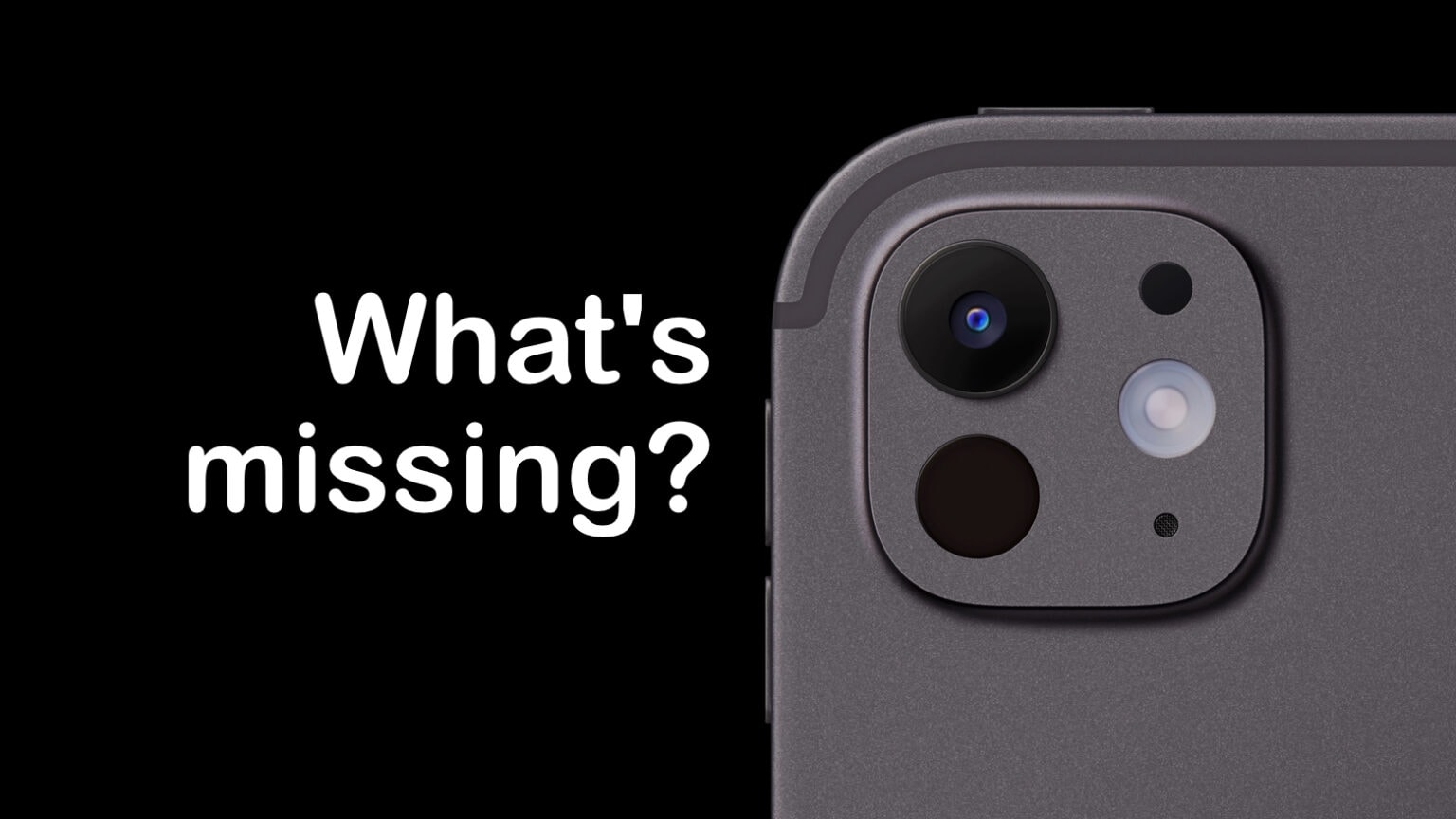Apple touts the beautiful OLED screen and speedy M4 processor in the latest iPad Pro, but some other features quietly disappeared.
And more that had been rumored or just hoped for simply never appeared.
M4 iPad Pro is ever so slim
iPad Pro is essentially a computer in a touchscreen. That makes the display critical, and Apple went “all in” with an OLED screen in the 2024 model that offers a bright, even image with strong contrast. Because each pixel glows on its own, no backlight is needed. This allowed designers to slim down the tablet, and drop the weight, too.
While that’s a benefit to users, clearly there’s not room for everything. And that includes some features that were in the 2022 version.
No Ultra-wide camera
In 2020, Apple added a 10 megapixel ultra-wide camera to the iPad Pro. This feature was also in the next two versions but dropped from the 2024 model. (The standard 12MP rear camera remains.)
As the name suggests, ultra-wide cameras are used to capture wide images, like buildings, groups of people, landscapes, etc. The one in the current iPad Pro is what powers the 0.5X mode in the Camera application that allows the user to zoom out when taking a picture.
Apple didn’t explain why it dropped the camera from the new model, but it could be because it was simply underused. While iPad rear-facing cameras have fans, more people prefer to use their iPhone even if they then have to transfer the image to their tablet.
And reducing the thickness and weight of the device undoubtedly required some cuts.
5G mmWave is gone
Earlier iPad Pro models with optional built-in 5G cellular wireless capabilities supported mmWave. This specific version of 5G has been dropped from the new M4 iPad Pro.
Some carriers, such as Verizon, are delivering multi-gigabit download speeds over cellular connections using 5G mmWave. But the connections are short range compared to rival cellular options, and signals don’t penetrate walls well. The result is that the technology has not been widely adopted.
It probably got cut from the M4 iPad Pro because so few potential buyers would ever be able to use it. mmWave remains in the latest iPhone models, though … for now.
Support for Apple Pencil 2? Nope.
Along with the 2024 iPad Pro came Apple Pencil Pro that boasts a new “squeeze” gesture, an internal gyroscope, haptic feedback and Find My support. One of the reasons it’s necessary is the latest iPadOS device doesn’t support the previous Apple Pencil 2.
Apple apparently had to redesign the wireless charger used by the stylus, making the old version incompatible. Moving the iPad Pro front-facing camera to the long edge of the screen left less room for the magnetic Apple Pencil charger that sits in the same place. Apple Pencil 2 had been designed for a specific charger that doesn’t fit in the new model.
To be clear, the new stylus isn’t the only option. Pro tablet users can use Apple Pencil USB-C, as it doesn’t require wireless charging. It’s also significantly less expensive than Pencil Pro.
Still waiting for Wi-Fi 7
Wi-Fi 7 is the new version of the short-range wireless networking standard. Earlier versions used the 2.4 GHz and 5 GHz bands, then version 6E expanded to the 6 GHz band. Devices that use Wi-Fi 7 can simultaneously connected to a compatible router over all three bands. The result is reliability and speed.
But M4 iPad Pro doesn’t support Wi-Fi 7. It still uses version 6E.
Battery life isn’t longer
Apple promises the previous 13-inch iPad Pro offers up to 10 hours of web access on Wi-Fi or watching video. It says the 2024 model offers the same.
Apple’s decision to slim down the tablet by 20% means it gave up the opportunity to keep the iPad the same size as its predecessor while significantly increasing battery life.
No MagSafe or more ports
Pre-release rumors indicated that Apple might put MagSafe in the 2024 iPad Pro. It didn’t happen.
Adding the MacBook’s MagSafe charging port would have allowed the tablet’s single USB-C port to be dedicated to data, without the user having to charge the device through it as well.
There was also hope — not backed up by leaks or rumors, just hope — of more than one USB-C port. Nope.



